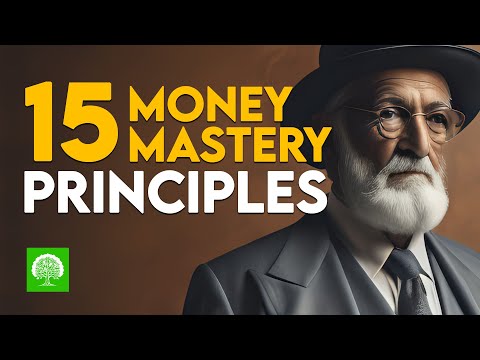Unleashing Financial Mastery: Exploring Tony Robbins’ “Money: Master the Game”
10Estimated reading time: 3 minutes

Introduction
In the realm of personal development and financial education, Tony Robbins is a name that resonates with millions worldwide. Known for his motivational prowess, Robbins extended his expertise to the world of personal finance with his book “Money: Master the Game.” This comprehensive guide aims to demystify the intricacies of investing, wealth management, and financial freedom. By distilling complex financial concepts into actionable steps, Robbins empowers readers to take control of their financial destiny. In this exploration, we delve into the key insights from “Money: Master the Game.”
- Demystifying Financial Jargon
- Robbins starts by breaking down complex financial terms, making them accessible to readers regardless of their financial literacy level.
- The Power of Compounding
- He highlights the magic of compounding, emphasizing that consistent small investments can lead to substantial wealth over time.
- Creating an Action Plan
- Robbins advocates for creating a detailed financial plan that aligns with one’s goals, whether it’s retirement, buying a home, or funding education.
- Diversification and Asset Allocation
- The author stresses the importance of diversifying investments and intelligently allocating assets to manage risk effectively.
- The Impact of Fees
- Robbins sheds light on the often overlooked impact of fees on investments, urging readers to opt for low-cost options to maximize returns.
- Unveiling the All-Weather Portfolio
- He introduces the concept of the “All-Weather Portfolio,” a balanced mix of asset classes designed to weather various economic conditions.
- The Influence of Psychology
- Robbins delves into behavioral finance, highlighting how emotions can impact investment decisions and providing strategies to overcome biases.
- Mastering the Game of Saving
- He emphasizes that disciplined saving is the foundation of wealth creation, offering insights into automating savings and living within one’s means.
- Investing for Impact
- Robbins introduces the idea of socially responsible investing, aligning one’s investments with personal values and social impact.
- The Importance of Educated Investing
- He urges readers to educate themselves about investments, fostering a sense of empowerment and control over their financial future.
- The Rule of 100 Minus Your Age
- Robbins offers a simplified approach to asset allocation based on the “Rule of 100 Minus Your Age,” providing a guideline for investment decisions.
- Navigating Market Volatility
- The author provides strategies to navigate market fluctuations without succumbing to fear or making rash decisions.
- The Ripple Effect of Giving
- Robbins underscores the significance of philanthropy, highlighting how giving back can positively impact both personal and financial well-being.
- The Journey to Financial Freedom
- He emphasizes that financial freedom isn’t just about money; it’s about having the resources to live life on your terms and contribute meaningfully.
- A Call to Action
- Robbins concludes by inspiring readers to take immediate action, whether it’s setting up automated savings, reviewing investments, or creating a financial plan.
Conclusion
“Money: Master the Game” is more than just a financial guide; it’s a roadmap to financial empowerment and liberation. By distilling complex financial concepts into actionable steps, Tony Robbins equips readers with the tools to navigate the realm of investing and wealth management. The book’s insights encourage us to take charge of our financial future, make informed decisions, and embark on a journey towards financial mastery. As we internalize Robbins’ wisdom, we realize that achieving financial freedom is not a distant dream—it’s a tangible reality that begins with a commitment to educate, empower, and transform our financial lives.



















